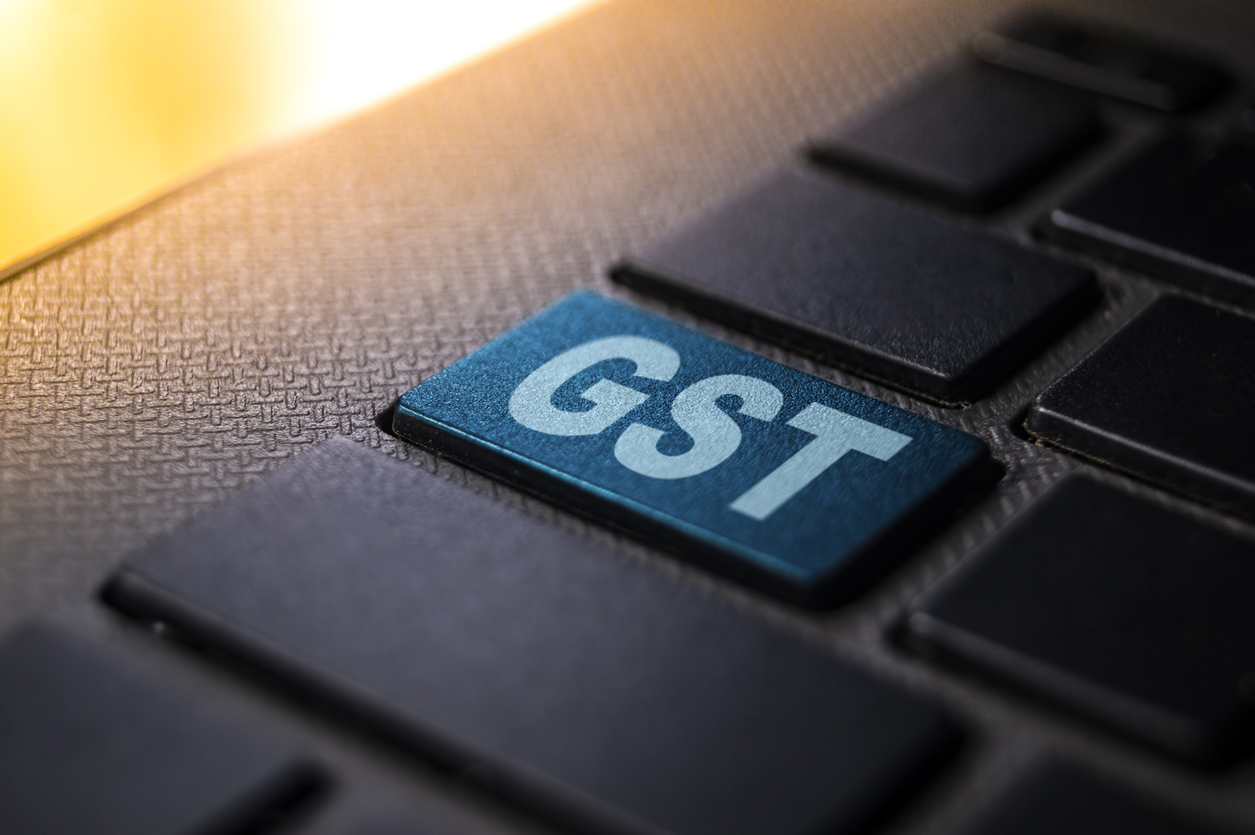Goods and Services Tax (GST) – three words that have dramatically transformed the taxation
landscape in India. Implemented in 2017, GST aimed to subsume a myriad of indirect taxes into
a unified system, making tax compliance simpler and more efficient. This revolutionary tax
structure has significantly reduced the cascading effect of taxes and streamlined various tax
categories. But, what truly revolutionised the system is the ability to make payments online.
Gone are the days of standing in long queues, waiting for your turn to pay taxes. Today, with a
few clicks, individuals and businesses can clear their GST payment dues from the comfort of
their homes, bringing efficiency and convenience into the Indian taxation realm.
![]() Understanding GST and Its Components
Understanding GST and Its Components
At the heart of the GST system are three primary components: CGST, SGST, and IGST.
1.CGST (Central Goods and Services Tax): Collected by the central government, CGST
is levied on intra-state sales. In simpler terms, if you’re selling goods or services within
your state, CGST comes into play.
2.SGST (State Goods and Services Tax): Working hand-in-hand with CGST on intrastate
sales, SGST is collected by the state government. For every intrastate transaction,
CGST and SGST are applied, dividing the tax between the Centre and the State.
3.IGST (Integrated Goods and Services Tax): Regarding inter-state sales or import–
export of goods and services, IGST takes centre stage. It ensures that the State tax
element gets appropriately routed to the consumer state where the goods or services
are consumed.
Timely payment of these taxes is pivotal. Not only does it keep you in compliance and away
from penalties, but timely contributions also bolster the government’s revenue, aiding
infrastructural and developmental projects. Plus, with the online system in place, ensuring punctuality has never been easier.
![]() Prerequisites for Online GST Payment
Prerequisites for Online GST Payment
Before you take the digital leap into the world of online GST payment, there are a couple of
essentials you need at the ready:
1.GSTIN (Goods and Services Tax Identification Number): This 15-digit number is like
your passport into the GST realm. Based on your state code, PAN and entity number,
this unique code identifies you as a registered taxpayer.
2.Valid Login Credentials: Ensure you’ve registered on the GST portal and have your
username and password handy. If you’re logging in for the first time, you might be
prompted to change your initial password for security reasons.
With these essentials, you can make your GST payments online without a hitch.
![]() Navigating to the GST Portal
Navigating to the GST Portal
Alright, with prerequisites sorted, let’s dive into the main event:
1.Accessing the Portal: Kick things off by heading to the official GST portal –
[gst.gov.in](https://www.gst.gov.in/). This is your gateway to all things GST. A user–
friendly interface, accompanied by handy resources and announcements, welcomes
you.
2.Logging In: Locate the ‘Login’ button at the top right of the home page. Enter your valid
credentials – the username and password you’ve secured in the prerequisites.
3.Dashboard Familiarisation: Once you’ve logged in, you’ll be ushered to your
personalised dashboard. Think of this space as your command centre! Here, you’ll find
various tabs and options, from filing returns to tracking your payment status. For online
payment, look out for the ‘Services’ tab. Hover over it, and a dropdown menu will present
options related to ledgers, payments, and more. This is where the magic of online GST
payment happens. But before you proceed, take a few moments to familiarise yourself
with the layout. A little exploration can make the subsequent steps a breeze.
![]() Filling in the Details: GSTR-3B Form
Filling in the Details: GSTR-3B Form
filed by every registered dealer, regardless of any transactions during the month.
![]() Description and Importance of the GSTR-3B
Description and Importance of the GSTR-3B
The GSTR-3B is a summary return of inward (purchases) and outward (sales) supplies. It’s a
crucial form because it helps in the final settlement of tax liabilities. Miss out on this, and you
could be facing interest or penalties!
![]() Filling in Payment Details
Filling in Payment Details
The form requires you to detail your sales and purchases, the applicable GST rate, and the tax
payable amount. Here, you will declare your total tax liability and input tax credits (state and
centre). The form isn’t just about payments, though. It’s also where you can claim input tax
credits, which can help reduce your overall GST liability. Make sure to fill in these details
carefully, double-checking all figures.
![]() Generating the Challan
Generating the Challan
Your GSTR-3B is complete, and you clearly understand what you owe. Now, it’s time to
generate the payment challan.
Steps to Create the Payment Challan
Head to your dashboard and click the ‘Create Challan’ option under the ‘Payments’ section. The
system will auto-populate many fields based on your GSTR-3B but always double-check to
ensure accuracy. Once all details are verified, you can proceed to generate the challan.
![]() Details Required and Modes of Payment
Details Required and Modes of Payment
Your challan will reflect the tax amounts (CGST, SGST, IGST, and cess, if applicable) you must
pay. Additionally, you’ll need to select a payment mode. The GST Portal offers multiple payment
methods for your convenience: Over the Counter (for payments up to ₹10,000), NEFT/RTGS,
and online payment (using credit/debit cards or net banking). Choose the most convenient
method for you, follow the respective prompts, and voilà – your GST payment is on its way!
![]() Making the Payment
Making the Payment
This is pivotal – transferring the funds to settle your GST liability.
Choosing Your Payment Method
The GST Portal is remarkably flexible when it comes to payment methods. Depending on the
amount and your preference, you can opt for:
1. Net Banking: It is ideal for quick and straightforward transactions. Most major banks
are integrated with the GST system.
2.Credit/Debit Cards: These are useful for those who want to manage their cash flow or
avail themselves of card benefits.
3.NEFT/RTGS: Perfect for large amounts, ensuring secure and documented fund
transfers directly from bank accounts.
![]() Payment Confirmation and Receipt
Payment Confirmation and Receipt
Once the payment is successful, you’ll receive a confirmation on the portal. Additionally, a
receipt will be generated, which you should save and print. This serves as proof of payment and
might be helpful for your records or in case of discrepancies.
![]() Troubleshooting Common Issues
Troubleshooting Common Issues
Even the best systems can hiccup from time to time. If you face issues, don’t panic. Here’s what
you can do:
![]() Payment Failure
Payment Failure
Check your bank account or card statement first if your payment doesn’t go through. If the
amount has been debited, but the portal doesn’t reflect it, it might take a few hours for the
transaction to sync; if it doesn’t, reach out to the helpline.
![]() Common Glitches and Queries
Common Glitches and Queries
Sometimes, the portal is slow, or some features are unresponsive. Clearing your browser cache
or trying a different browser often helps. The GST Portal has an extensive FAQ section for any
persistent issues or queries. If that doesn’t help, note down error codes or take screenshots and
contact the support team.
Get to know more about Tallyman Axis and how it enhances mobile banking.
![]() Advantages of Online GST Payment
Advantages of Online GST Payment
In today’s digital age, making GST payments online has turned from a luxury into a norm. Here’s
why:
●Time-saving and Efficient: No more queues, no more lengthy forms. Click a few
buttons, fill in some details, and voilà – your payment is done. It’s all about convenience
at your fingertips.
●Transparent and Accurate: Digital records ensure you have a clear track of your
transactions. Mistakes are easier to spot, and the systems, being automated, often
reduce human error. Plus, with each transaction recorded, transparency is at its peak.
![]() Conclusion
Conclusion
We’ve journeyed through the streamlined world of online GST payments in India. With its blend
of efficiency, transparency, and ease, it’s clear why it’s the preferred method for many. So, the
next time your GST payment is due, remember: the digital route isn’t just the modern way; it’s
the smarter way.

